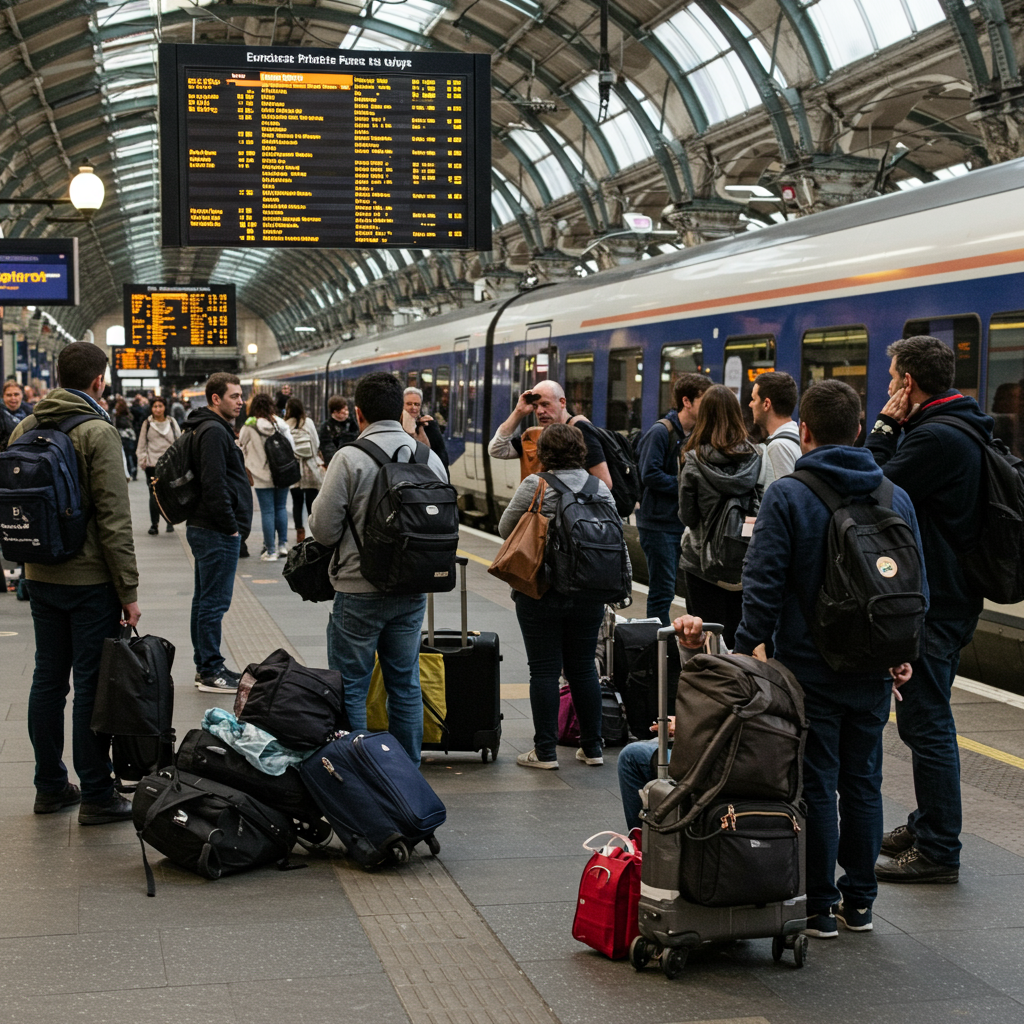President Donald Trump recently announced a trade agreement with vietnam, a move positioned as a win for American trade policy. However, hidden within the details of this new deal is the potential for everyday goods you buy – from the shoes on your feet to the electronics in your home – to become more expensive. This surprising consequence challenges conventional wisdom about who ultimately pays the price for import taxes.
For months leading up to this announcement, imports from Vietnam faced a minimum 10% tariff. This was a temporary pause from an earlier, much higher rate of 46% that briefly took effect in April. The administration had set a July 9 deadline, urging countries to negotiate trade deals to avoid these escalating costs. While a framework with Vietnam was announced, the terms themselves introduce significant tariff increases.
Unpacking the New Vietnam Trade Agreement Terms
Under the terms announced via social media, the new baseline tariff rate on goods shipped from Vietnam to the United States is set at a minimum of 20%. This is double the rate US businesses were paying just before the deal. Additionally, the agreement includes a much higher 40% tariff specifically targeting “transshipped” goods – items originating from a third country but routed through Vietnam to potentially evade other tariffs.
In theory, this agreement provides reciprocal benefits. President Trump stated that Vietnam agreed to open its economy, offering “TOTAL ACCESS” and “ZERO Tariff” on numerous American goods entering their market. This could create new opportunities for US exporters, such as automakers hoping to sell more SUVs in Vietnam. Yet, the immediate and most discussed impact revolves around the increased cost of imports into the US.
The Core Question: Who Pays for Tariffs?
Tariffs are essentially taxes on imported goods. When a tariff is imposed, the US-based importer (a business) pays this tax to the US government. A fundamental debate in trade policy revolves around who ultimately absorbs this cost. The Trump administration has consistently maintained that foreign exporters, eager to access the large American consumer market, will reduce their prices to offset the tariff, effectively paying the tax themselves.
However, many economists and businesses dispute this claim. They argue that while foreign suppliers might absorb a small portion, the bulk of the cost is passed along the supply chain. Businesses importing the goods face a decision: absorb the cost themselves, potentially reducing profit margins, or pass it on to downstream businesses (wholesalers, retailers) or directly to consumers through higher prices.
Billions in Costs for American Employers
Analysis suggests that American businesses, not foreign ones, are indeed bearing a significant portion of the tariff burden. A study by the JPMorganChase Institute, based on earlier tariff plans, projected a direct cost of $82.3 billion on a specific group of US employers – those with annual revenues between $10 million and $1 billion. This group represents roughly one-third of the private-sector workforce in the United States.
These mid-sized businesses are particularly reliant on importing goods or components from countries like Vietnam, China, India, and Thailand. Sectors like retail and wholesale, which operate with relatively narrow profit margins, are identified as being especially vulnerable. For affected firms in this category, the $82.3 billion cost is equivalent to an average of $2,080 per employee or 3.1% of their average annual payroll.
Businesses facing these costs must make difficult decisions. They might hike prices for customers, implement hiring freezes, resort to layoffs, or accept significantly lower profit margins.
The Ripple Effect on Consumer Prices
While businesses may initially absorb some costs to avoid losing customers, especially by building up inventory ahead of tariff deadlines, this strategy has limitations. Eventually, stockpiles dwindle, and the increased cost of importing goods must be addressed. This is when the tariffs are most likely to impact consumers directly.
Econometric projections support this likelihood. A report from Goldman Sachs projected that businesses would pass approximately 60% of their tariff costs onto consumers. Similarly, the Atlanta Federal Reserve’s survey of business inflation expectations indicated firms might pass along about half the costs from a 10% or 25% tariff increase without significantly dampening consumer demand.
Given that Vietnam has become a major source of goods for the US – rising to the sixth-top rank – and is a key supplier of electronics, apparel, footwear, and furniture, millions of American households could see price increases on these common purchases as a result of the higher tariff rates established by this new agreement.
Why Vietnam? Trade Shifts and Circumvention Tactics
Vietnam’s role in global trade has grown significantly in recent years. As trade tensions with China escalated, many companies began shifting parts of their manufacturing and supply chains to Southeast Asian nations like Vietnam to mitigate tariff impacts. This surge in imports from Vietnam has contributed to a large trade surplus between Vietnam and the US.
The new trade deal, particularly the 40% tariff on transshipped goods, explicitly addresses concerns that Vietnam is being used as a conduit for goods originating elsewhere, especially China, to bypass US tariffs through “origin washing.” This higher tariff aims to make such circumvention strategies uneconomical, ensuring that goods ultimately sourced from high-tariff countries face appropriate import taxes, even if they pass through intermediate nations.
The Broader Trade Strategy and July 9 Deadline
The Vietnam agreement is just one piece of a larger, intense period of trade negotiations. President Trump had set a July 9 deadline, after which earlier, higher tariff rates (up to 46% for many countries) were set to snap back for partners who hadn’t reached new agreements. This deadline created pressure for countries to negotiate quickly.
While the US has engaged in talks with numerous partners including Japan, the European Union, Canada, India, and South Korea, reaching deals has proven challenging. Negotiations with Japan reportedly soured, while discussions with India stalled over agricultural access. The EU expressed willingness to accept a universal 10% tariff but sought sector-specific exemptions. Even with progress like Canada eliminating its digital services tax or Indonesia planning large US purchases, uncertainty remains high across the board.
The administration’s stated goal is to level the international playing field and encourage domestic manufacturing by making imports more expensive. However, economists point out that relocating supply chains and building manufacturing facilities in the US takes years, leaving businesses reliant on imports in the interim and vulnerable to increased costs that are difficult to avoid passing on to consumers. The debate over who truly pays for tariffs – US businesses and consumers or foreign exporters – remains central to evaluating the real economic impact of these trade agreements.
Frequently Asked Questions
What are the new tariff rates on goods from Vietnam under the recent deal?
The trade agreement announced by President Trump sets a new minimum tariff rate of 20% on many goods imported from Vietnam into the United States. This is double the previous temporary rate of 10%. Additionally, the deal includes a significantly higher tariff of 40% specifically applied to goods that are considered “transshipped” through Vietnam but originally come from another country.
How could this new Vietnam trade deal affect prices for American consumers?
Economists and business analysts predict that the increased tariffs on Vietnamese goods will likely lead to higher prices for American consumers. While businesses initially importing the goods pay the tariff, they often pass these costs down the supply chain. Since Vietnam is a major supplier of products like electronics, clothing, footwear, and furniture, the higher import taxes are expected to result in increased retail prices for these items over time.
Why is the U.S. imposing a higher tariff on goods transshipped through Vietnam?
The 40% tariff on goods transshipped through Vietnam is intended to prevent companies from using Vietnam as a loophole to avoid US tariffs placed on products from other countries, particularly China. As some businesses have shifted production or routed goods through Vietnam to circumvent tariffs, the “transshipping” tariff aims to make this strategy financially unfeasible and ensure that goods originating from high-tariff nations face appropriate import costs regardless of their intermediate shipping point.


